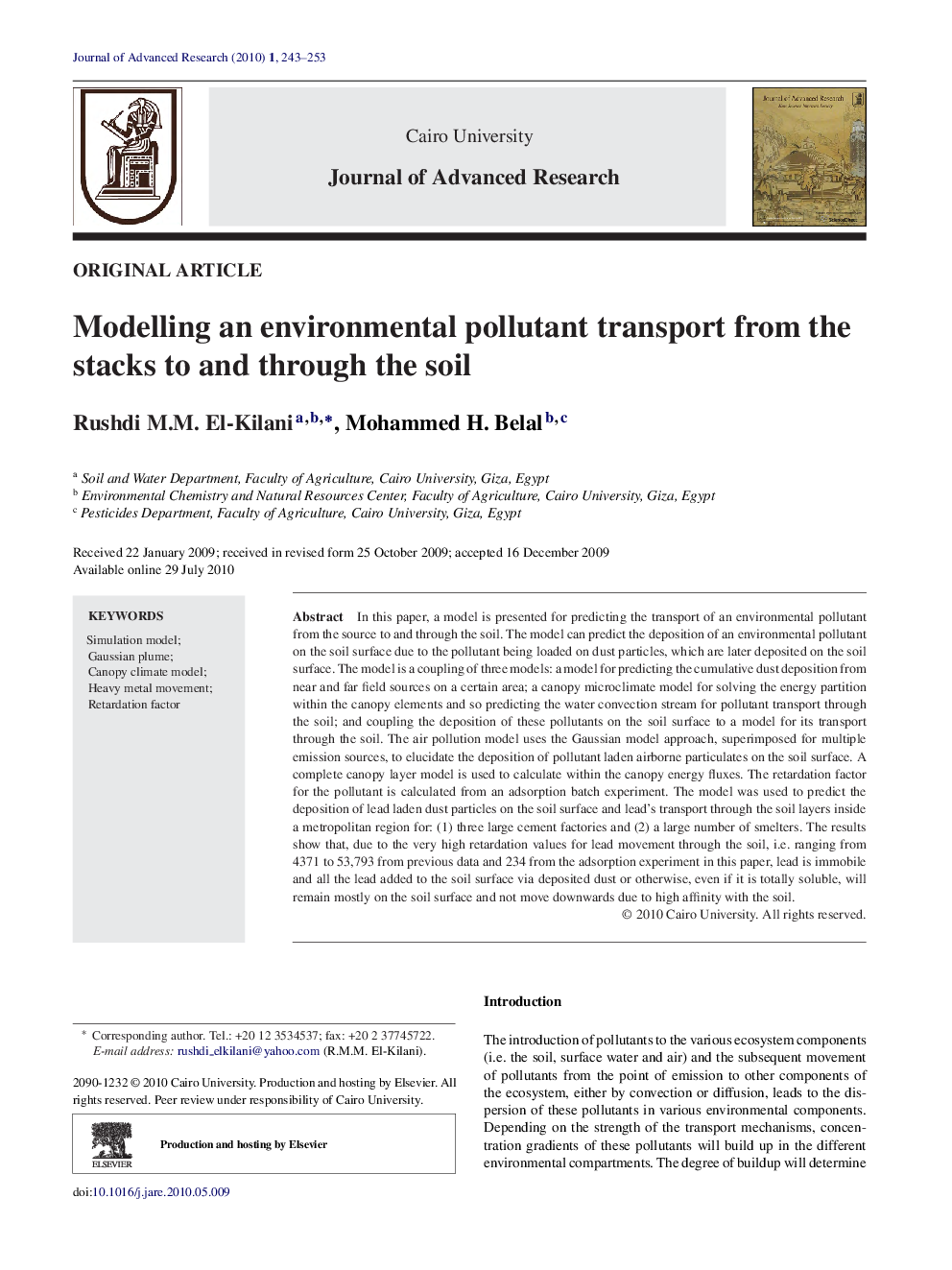| Article ID | Journal | Published Year | Pages | File Type |
|---|---|---|---|---|
| 826495 | Journal of Advanced Research | 2010 | 11 Pages |
In this paper, a model is presented for predicting the transport of an environmental pollutant from the source to and through the soil. The model can predict the deposition of an environmental pollutant on the soil surface due to the pollutant being loaded on dust particles, which are later deposited on the soil surface. The model is a coupling of three models: a model for predicting the cumulative dust deposition from near and far field sources on a certain area; a canopy microclimate model for solving the energy partition within the canopy elements and so predicting the water convection stream for pollutant transport through the soil; and coupling the deposition of these pollutants on the soil surface to a model for its transport through the soil. The air pollution model uses the Gaussian model approach, superimposed for multiple emission sources, to elucidate the deposition of pollutant laden airborne particulates on the soil surface. A complete canopy layer model is used to calculate within the canopy energy fluxes. The retardation factor for the pollutant is calculated from an adsorption batch experiment. The model was used to predict the deposition of lead laden dust particles on the soil surface and lead's transport through the soil layers inside a metropolitan region for: (1) three large cement factories and (2) a large number of smelters. The results show that, due to the very high retardation values for lead movement through the soil, i.e. ranging from 4371 to 53,793 from previous data and 234 from the adsorption experiment in this paper, lead is immobile and all the lead added to the soil surface via deposited dust or otherwise, even if it is totally soluble, will remain mostly on the soil surface and not move downwards due to high affinity with the soil.
